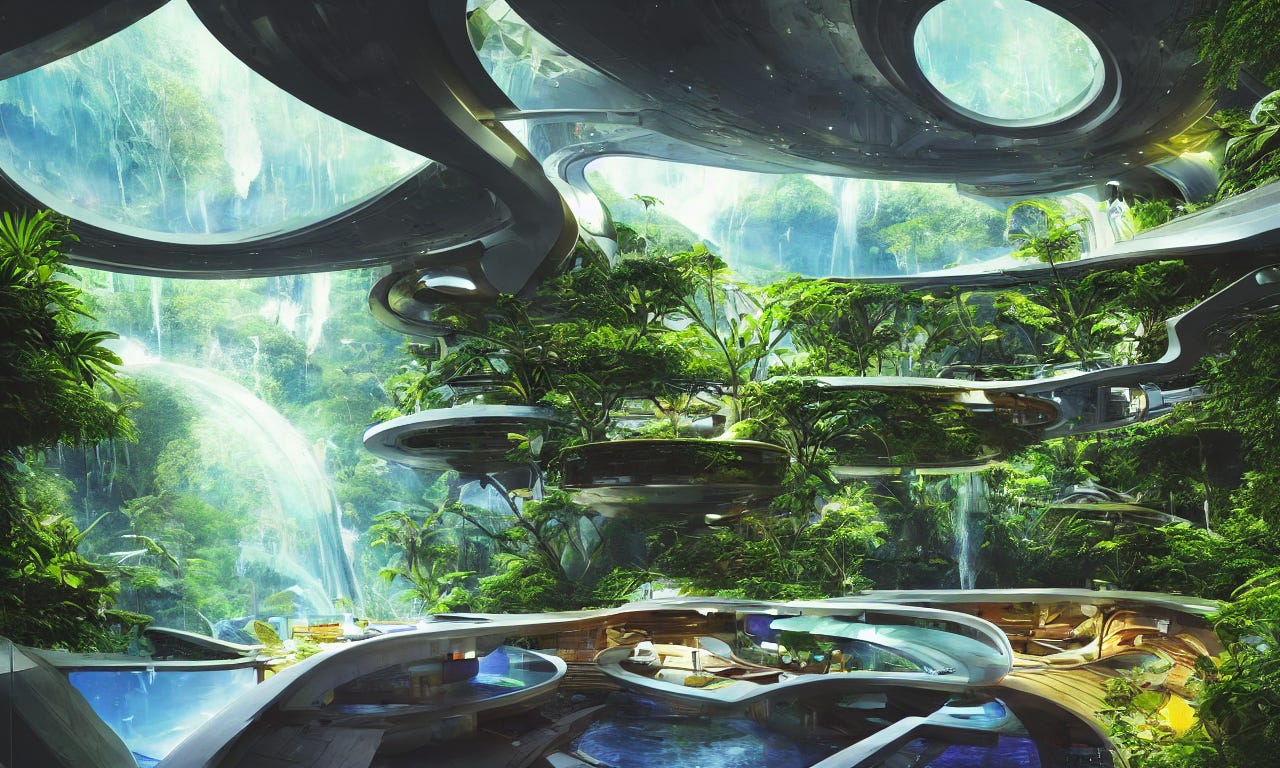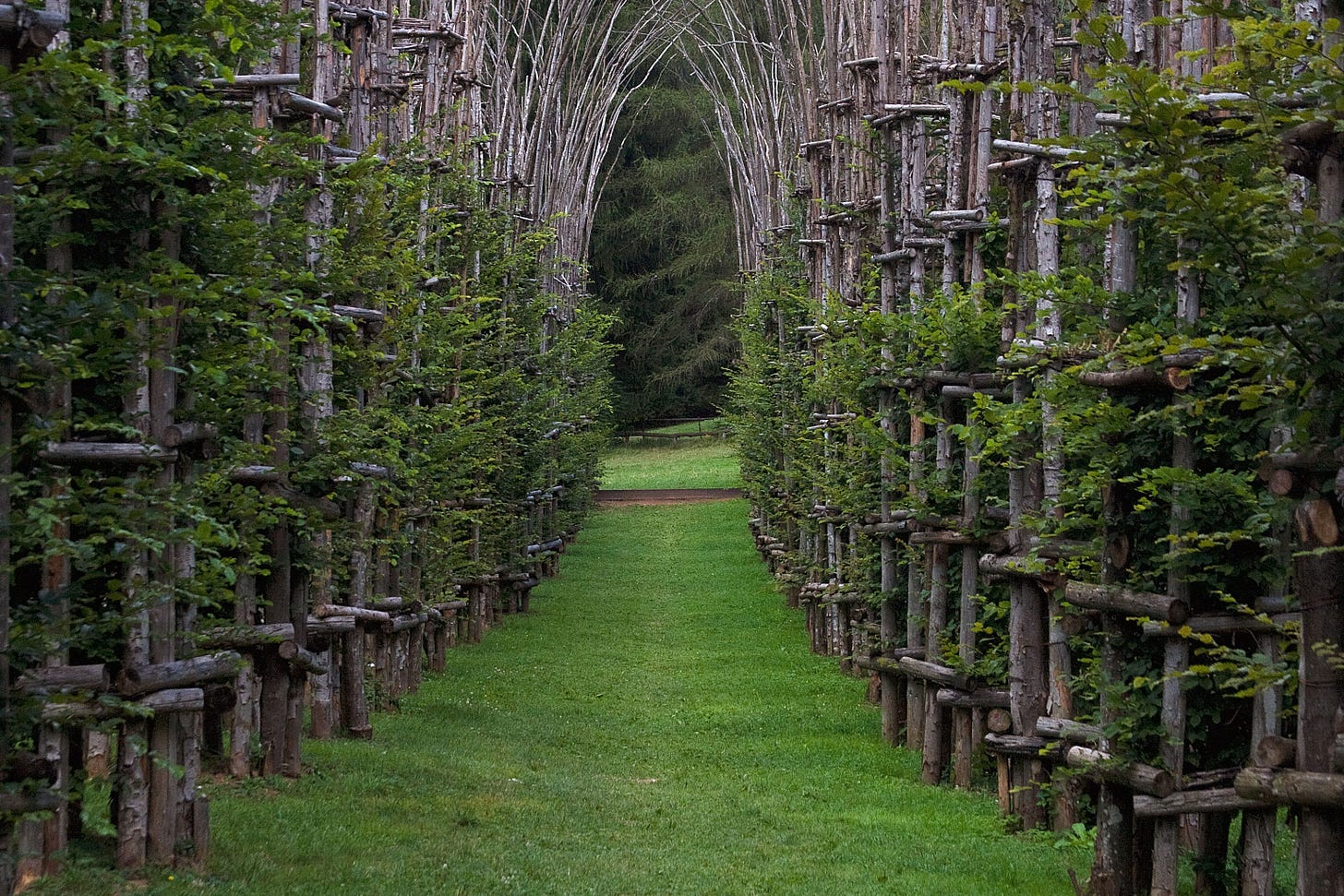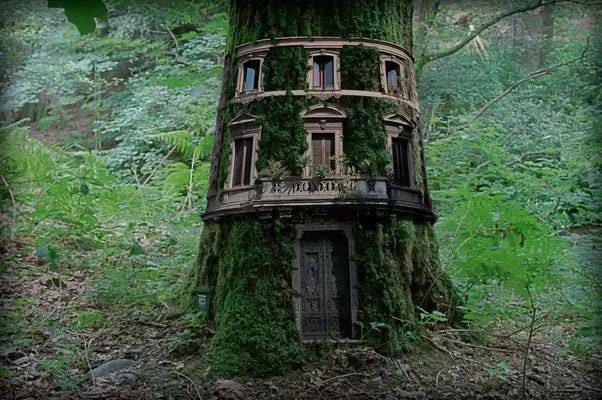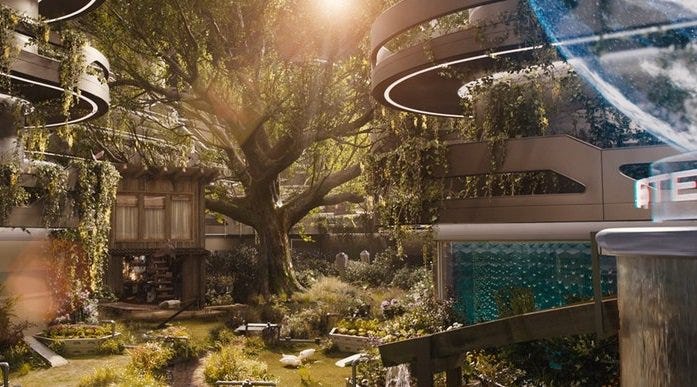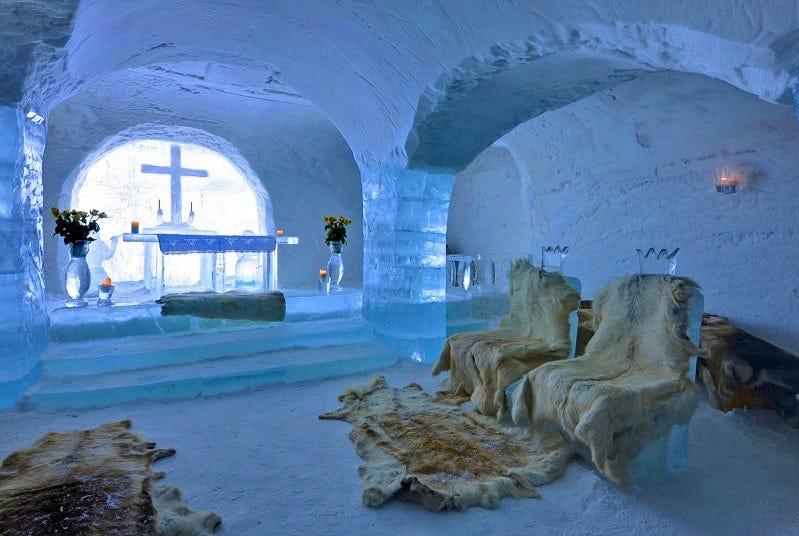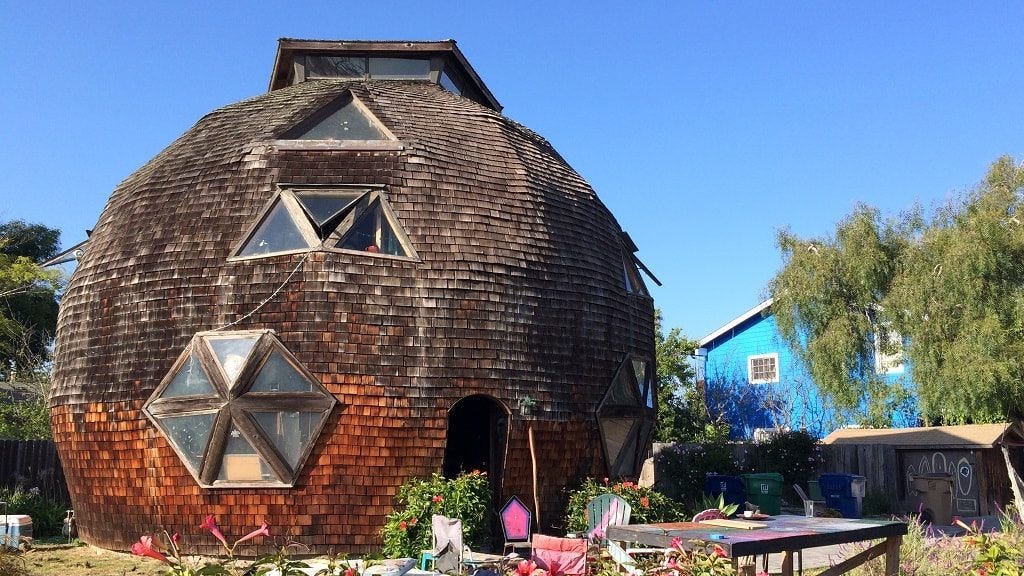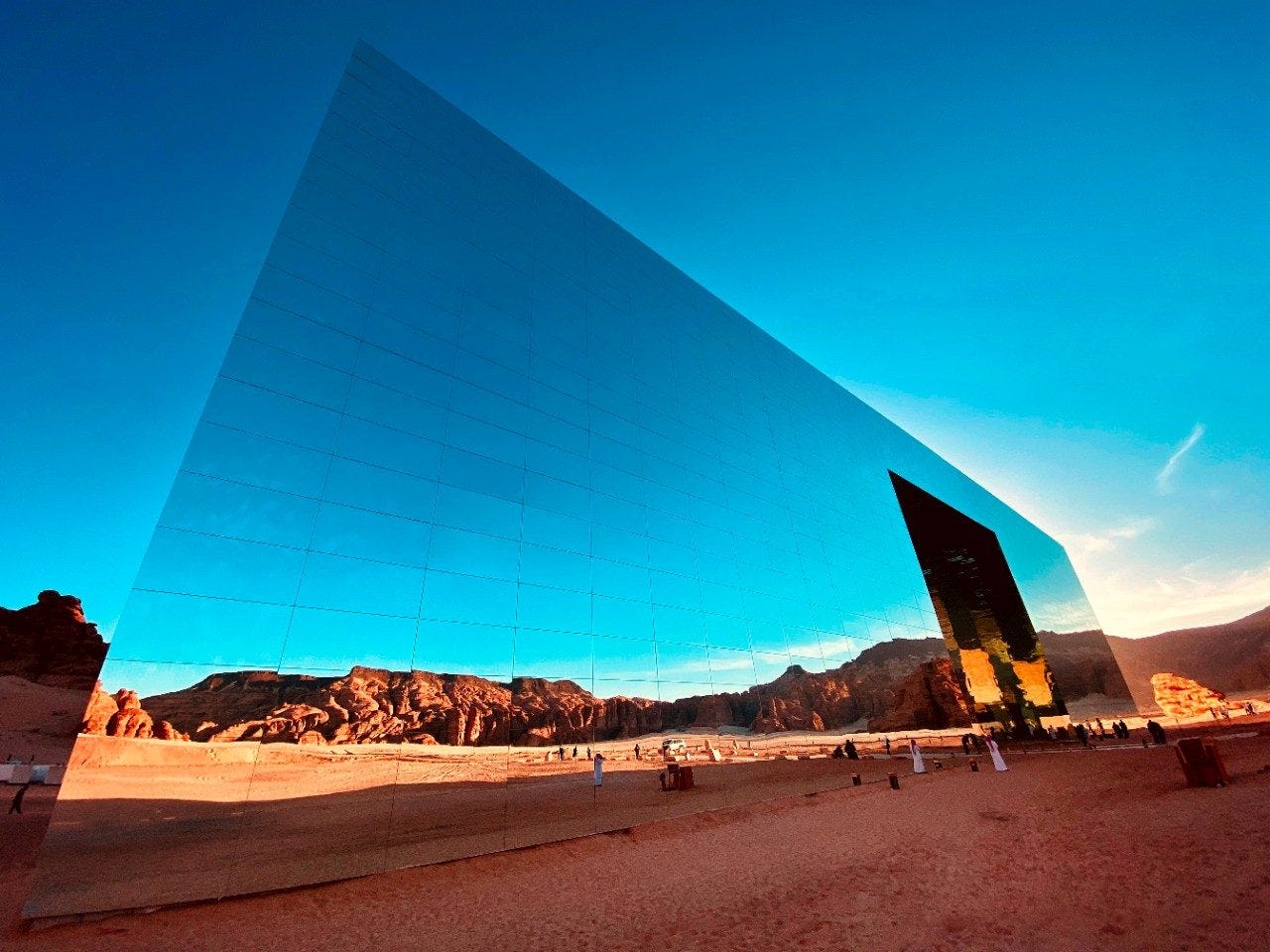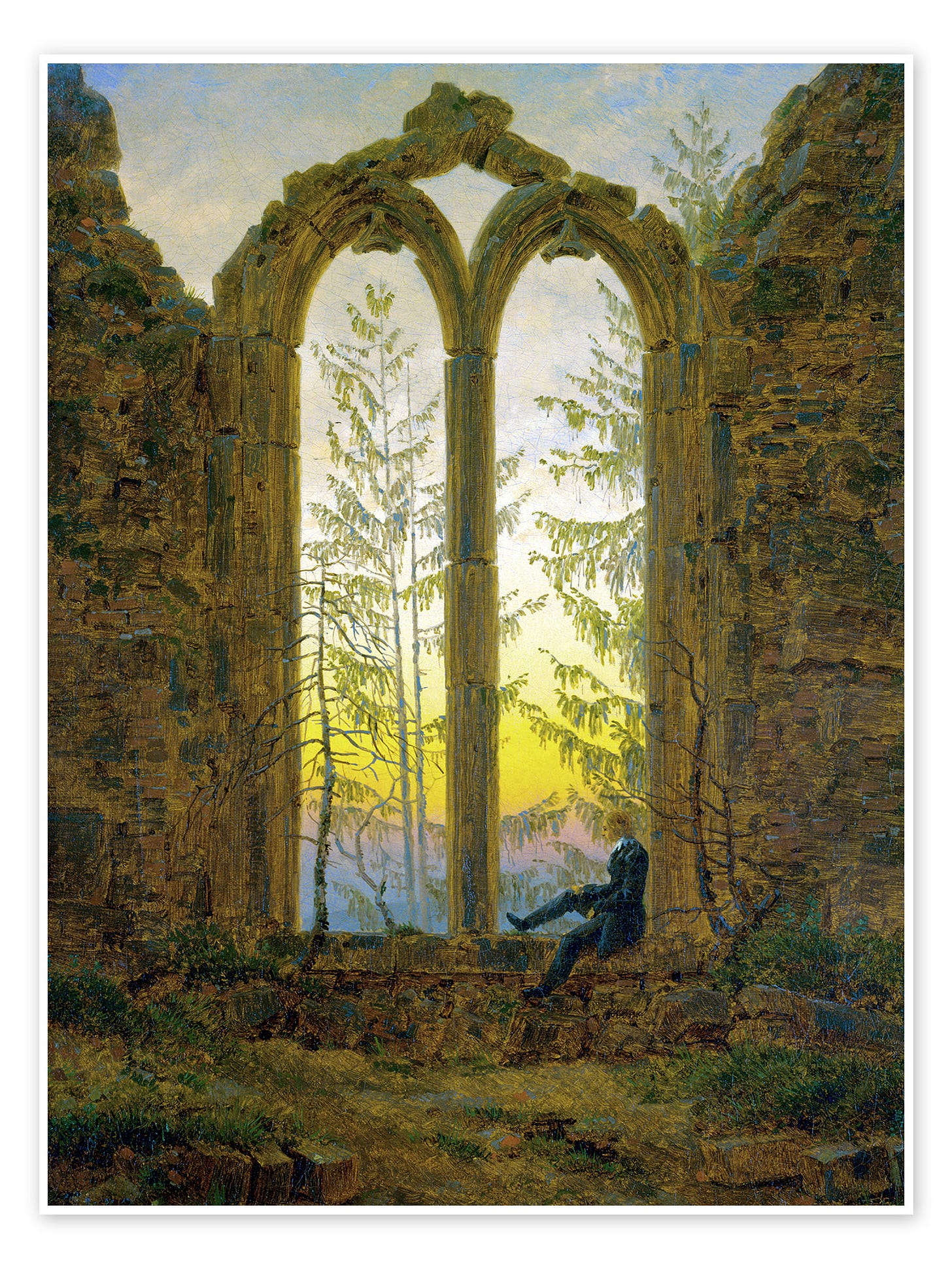Terracore is an aesthetic for the New New Romantics. Terracore comes from terraform since I see this as the most direct inspiration, and from terrarium since I see self-sustaining artificial system of nature as being the essence. Terracore is perhaps more accurately not an aesthetic nor an anti-aesthetic but a syn-aesthetic. Terracore is the opposite to both cottagecore and solarpunk, and the opposite to cyberpunk and steampunk, because terracore thinks that the division between natural environments and artificial environments is the only really artificial thing present. As soon as you have said “I am not going to touch this part of nature” when you are still able to this artificial choice is what defines your newfound “nature,” and since nature is always evolving, it will no longer be the same whether you decided to do things you want with it or not do things you want with it.
As long as you have the power it is always evolving under your direction, only in one case you direct it to evolve as you want and in another case you direct it to evolve as you did not want. It’s one thing to say, I mostly like this so I’m not going to do much to it, maybe I’m not going to do anything to change its course at all. It’s another to say: I’m not going to do what I want to it and I’m going to delude myself that this isn’t equally artificial, because maybe I want something out there to be my enemy or oppose me on some level, but I don’t want to admit I’m making my own enemies. Even the physical line between “natural” and “artificial” will always be gerrymandered. The best thing is to recognize what is present and to develop that.
johnirons: A translation of Goethe's sonnet about nature and art
Nature and art, they seem to shun each other Nature and art, they seem to shun each other Yet in a trice can draw back close once more; The aversion’s gone too that I felt before, Both equally attract me, I discover. An honest effort’s all that we require! Only when we’ve assigned art clear-cut hours, With full exertion of our mental powers, Is nature free our hearts once more to inspire. Such is the case with all forms of refinement: In vain will spirits lacking due constraint Seek the perfection of pure elevation. He who’d do great things must display restraint; The master shows himself first in confinement, And law alone can grant us liberation.
Thus terracore is not about any specific things but about the relationship between different things. Terracore is at its core symbiosis of concepts. Cyberpunk is when you put a computer inside your head like Elon Musk but terracore is when you put your head inside a computer. Cottagecore is when you are afraid of the unknown and want to hide in your cottage but terracore is when you realize that those who love God have no fear because there is no fear in love. Solarpunk is when you praise the Sun but terracore is when you make your own sun because you aren’t going to worship a star either.
Cottagecore & Frontier LARPing. Since Tumblr ceased to be the home of a… | by Adam Arola | Medium
As was already noted, this fundamental dialectic of the American mythos demands that we confront the wild without letting it subsume us. Were you to embrace the wild without taming it, you would be akin to an animal or *gasp* an Indian.
In terracore, you essentially are an “Indian,” or a Viking, or any other kind of ethnicity-undefined person, because terracore does not distinguish between the wild or the tame After all, the actual Indians and lots of other tribal societies weren’t actually simplistic hunter-gatherers, they understood the environment and would seed trees and manage animals intentionally, kind of like with deer populations and forests and similar today. Yet, for all the interest in nature, terracore does not want to return to some notion of the past or simplicity, and you are an “Indian” with all the force of industrial society yet none of the corporatism. Terracore sees engineering as predicated on nature just as much as nature is engineered. Terracore is the opposite of brutalism, because brutalism wants to brutalize nature and terracore wants to cultivate it and be cultivated by it at once.
Dutch indoor farming is terracore, since it recognizes that maybe if we like these so-called exotic plants so much we should grow them indoors. The Eiffel Tower is terracore, since it was a building designed to be the tallest and it took as its inspiration a bone since that was already tested and worked. Even the old Gothic architecture shows elements of terracore since it was based on people who read Plato and decided that a building should be designed so that light plays through it in certain ways and the arches are like the boughs of trees of the forest, rather than being so much of an end in itself like “here is my big slab of building!” But over time Gothic architecture seemed to lose sight of that and become more about “looking like a castle” and, well, “looking Gothic” and you don’t see the union with nature or the dynamic light-play at all in, say, the whole “Rothschild taste” that dictates the general aesthetic of modern, corporate, corporatist, fascist universities. Earthships are terracore and dome-homes are terracore and making a treehouse inside tree is terracore. If hobbits had more tech than orcs they would be the most terracore people ever dreamt up.
Terracore is not a new phenomenon or even really a new philosophy because terracore recognizes like the old Zen masters that the value of a cup is not in the object but in the empty space inside it. These ideas have been put into place before though not in this context, which is similar to what I talked about in my first article where I discussed the New New Romantics, that one cannot look upon anything devoid of theoretical context. Terracore is an aesthetic for the mind, or a syn-aesthetic if aesthetic is defined as being for the senses and this is not against them but rather orthogonal. It is not a reaction unlike a lot of what exists today but a pro-action.




